Luke-Acts 1
Mike Ervin
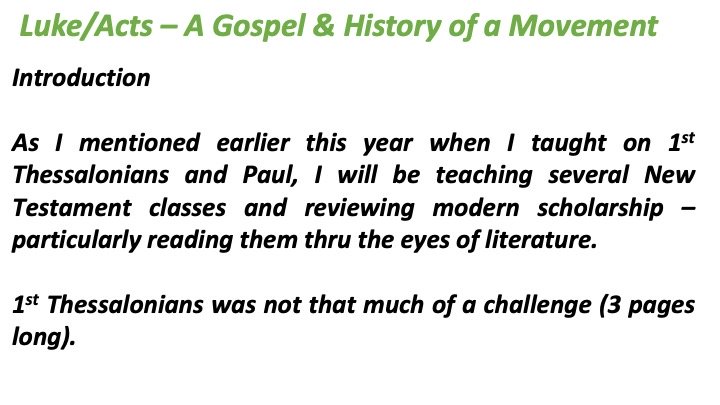
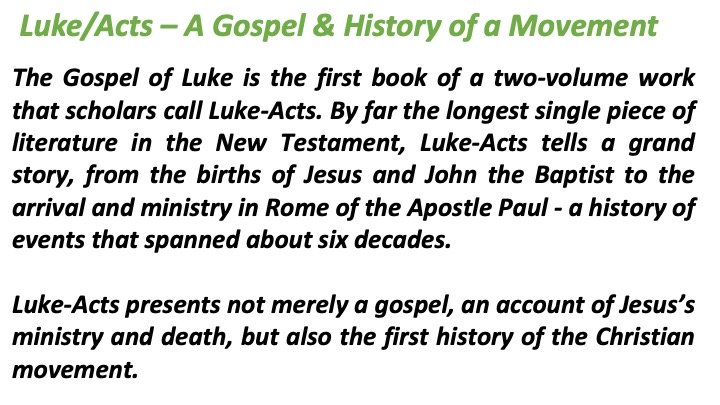
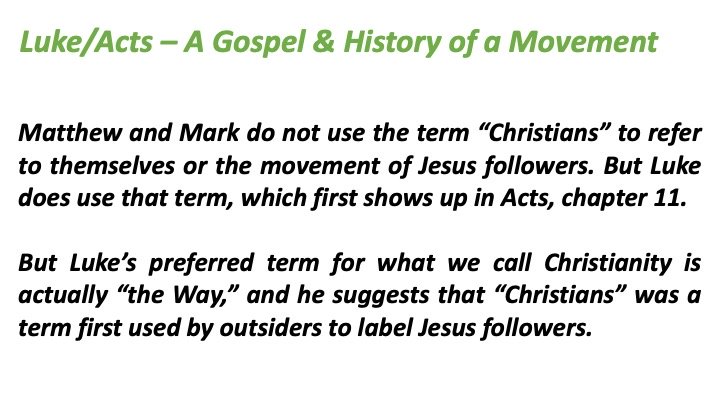
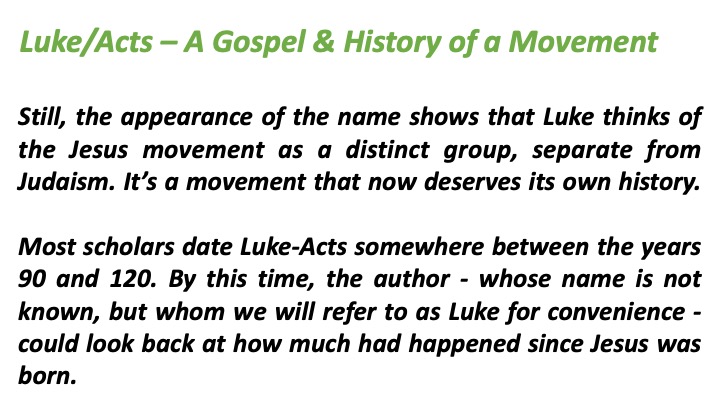
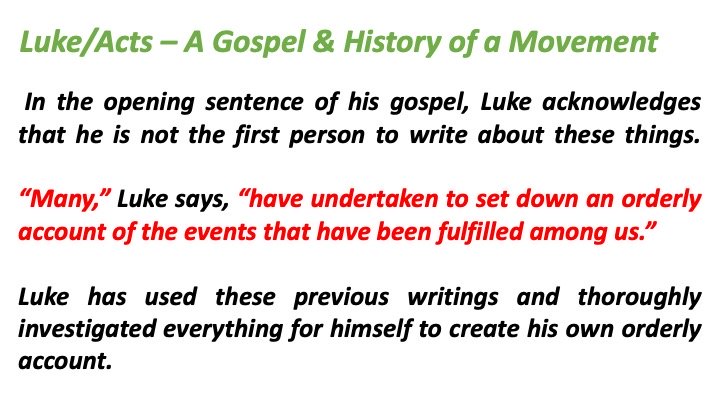
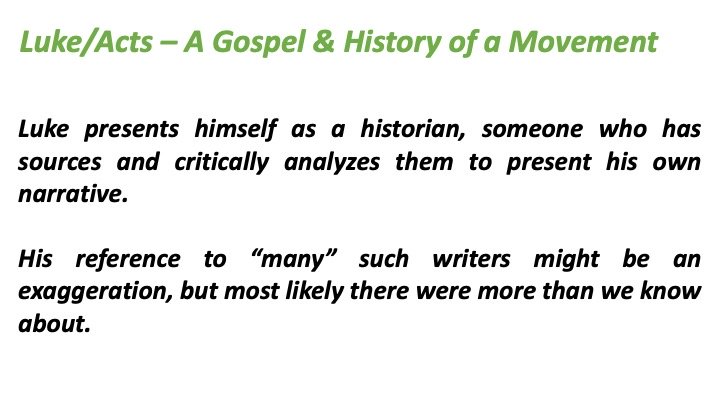
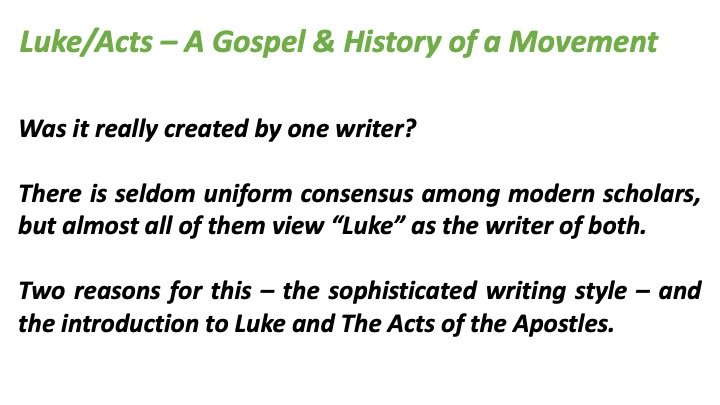
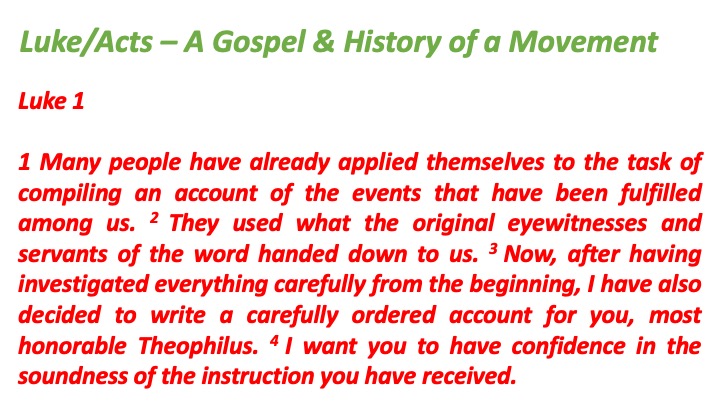

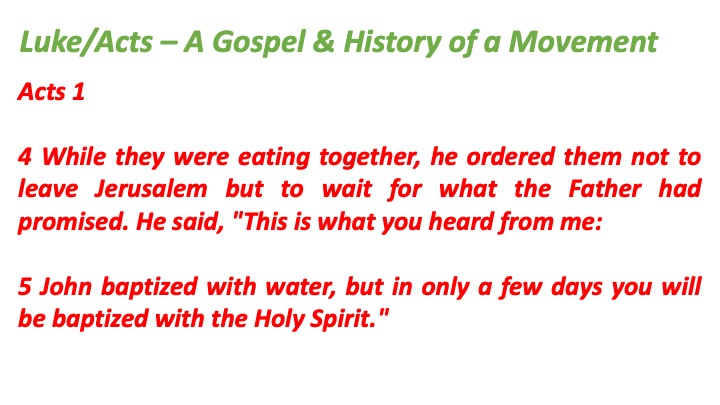
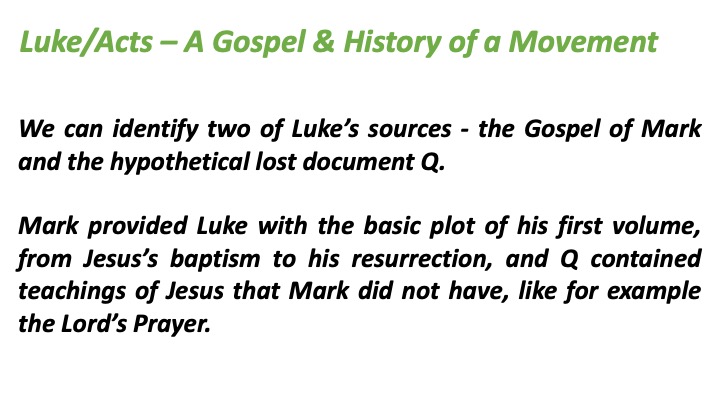
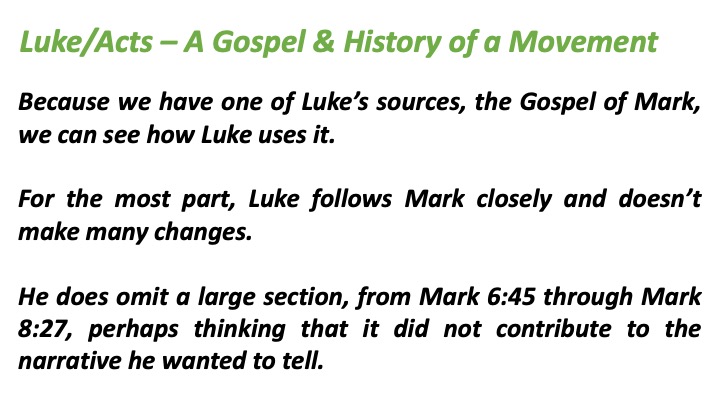
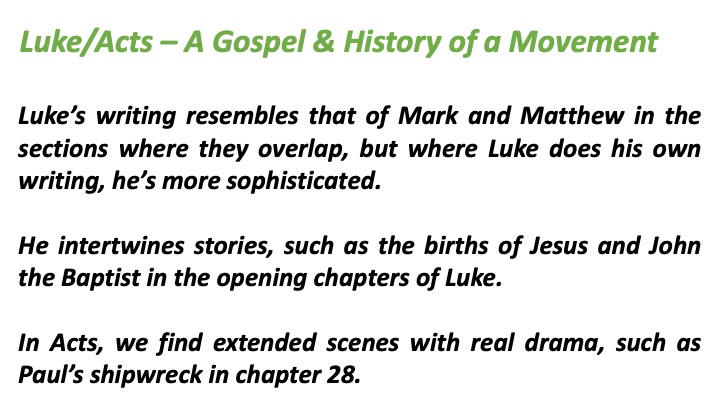
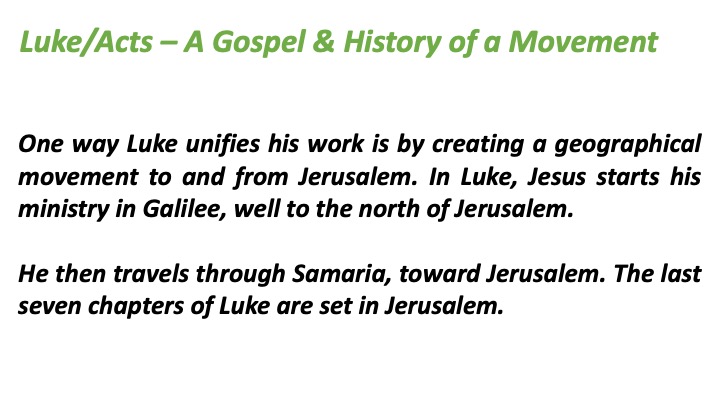
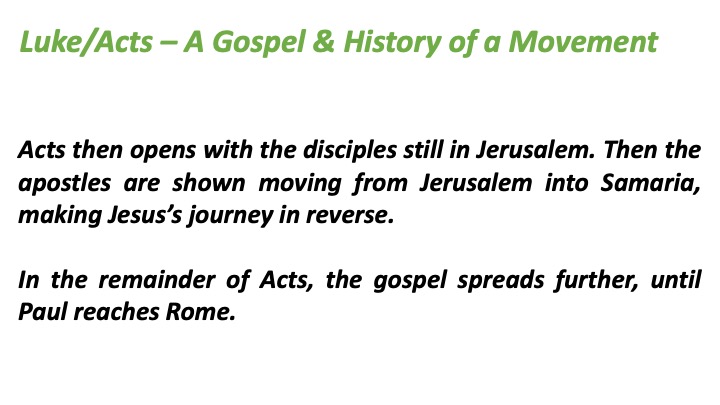
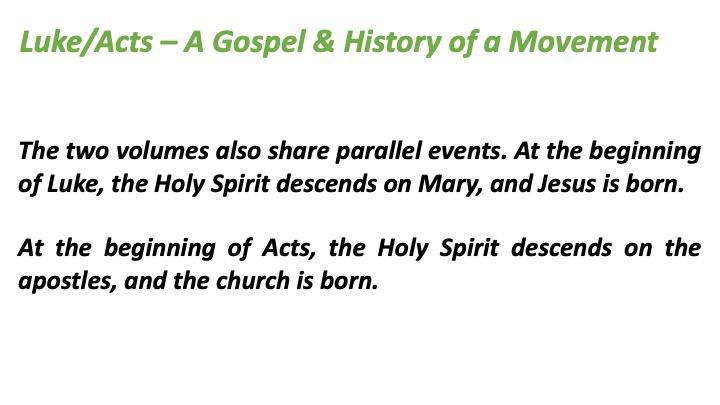
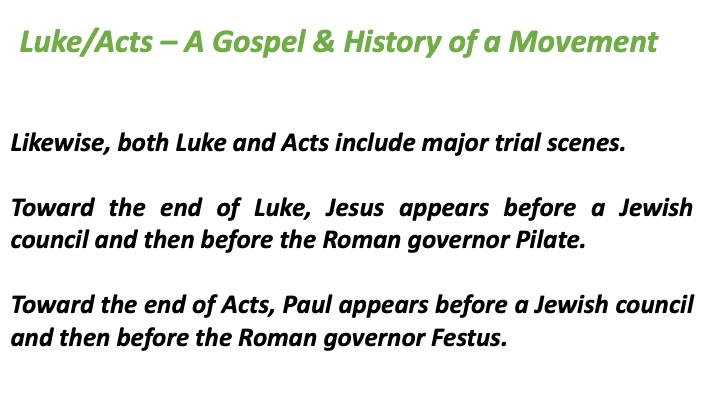

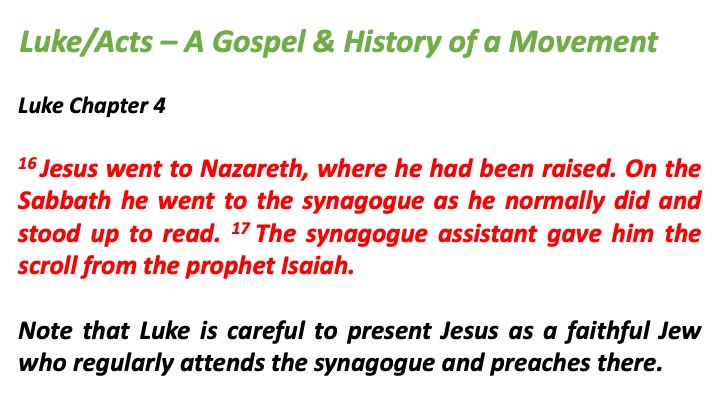
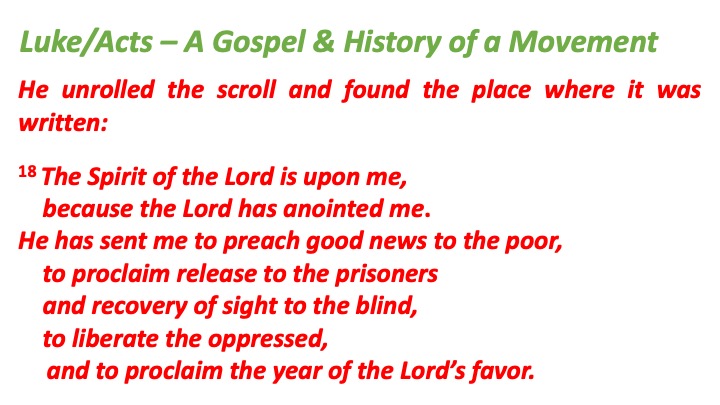
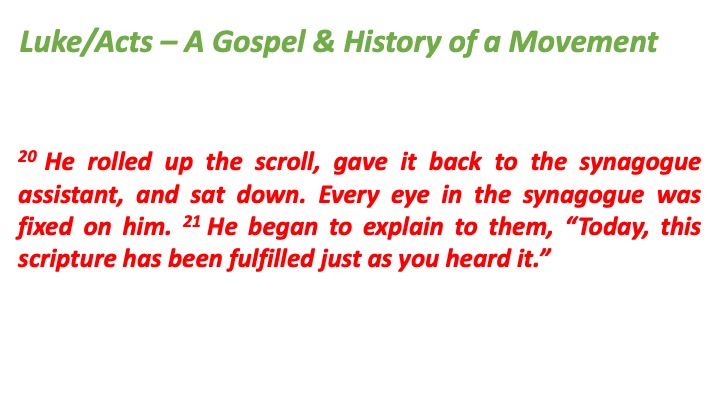

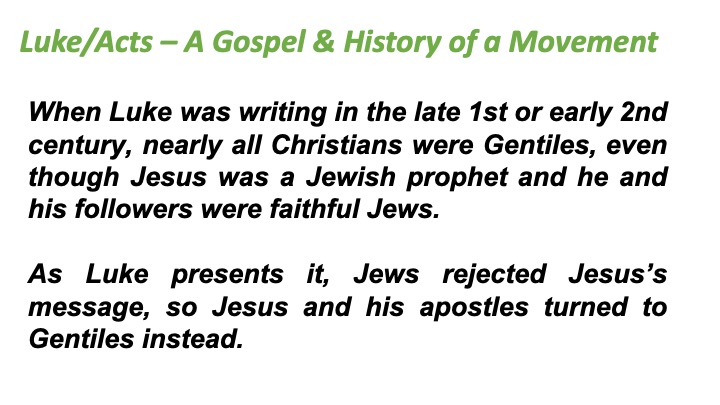
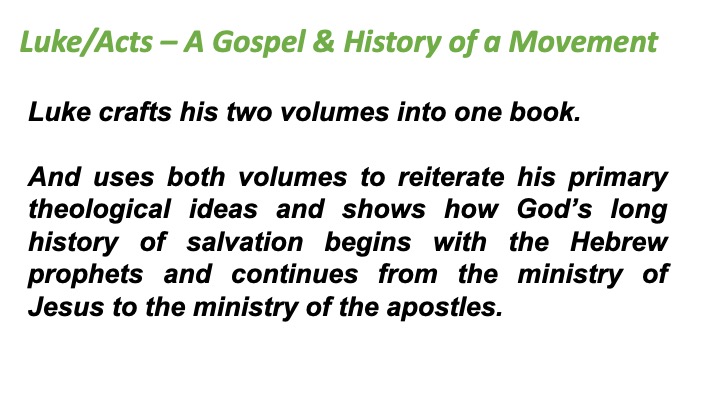
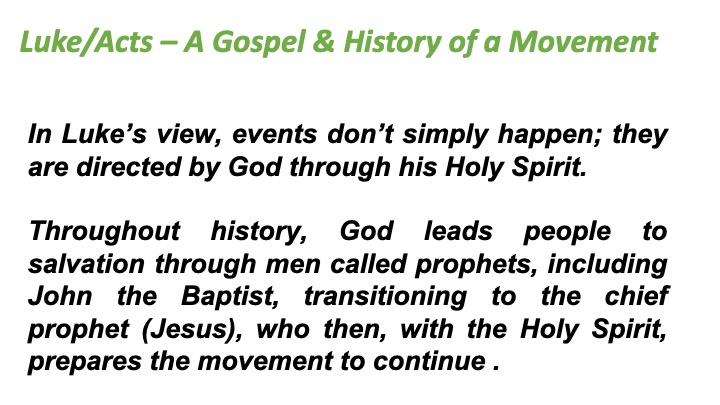
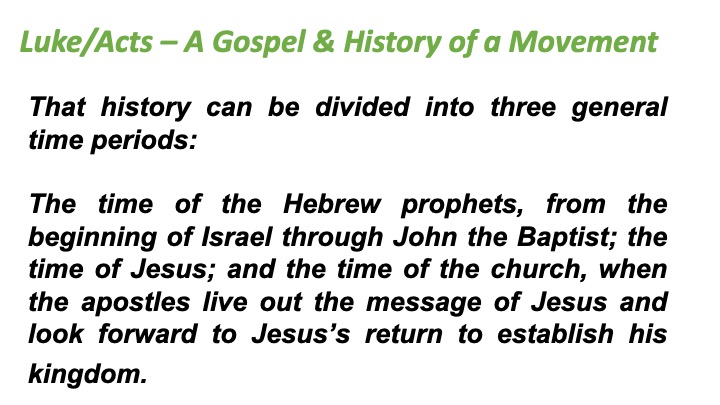
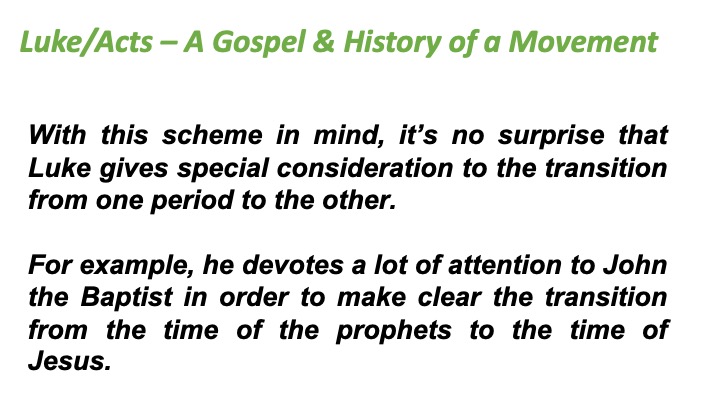
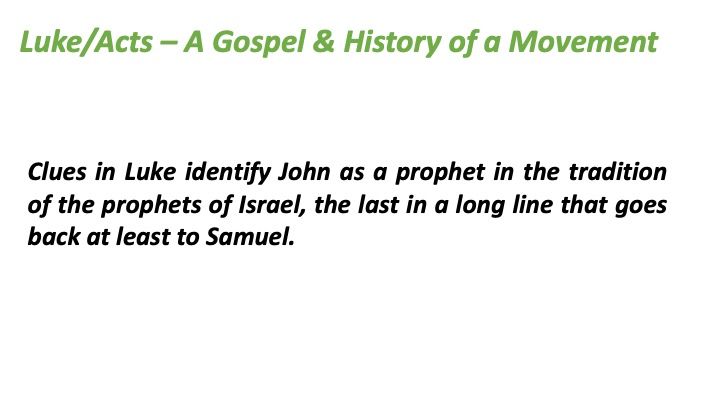
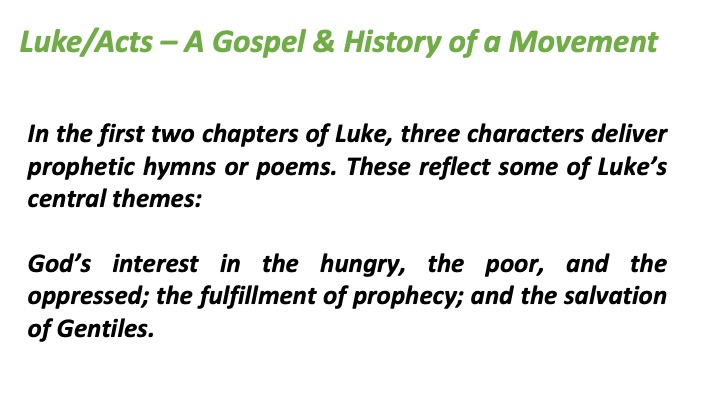
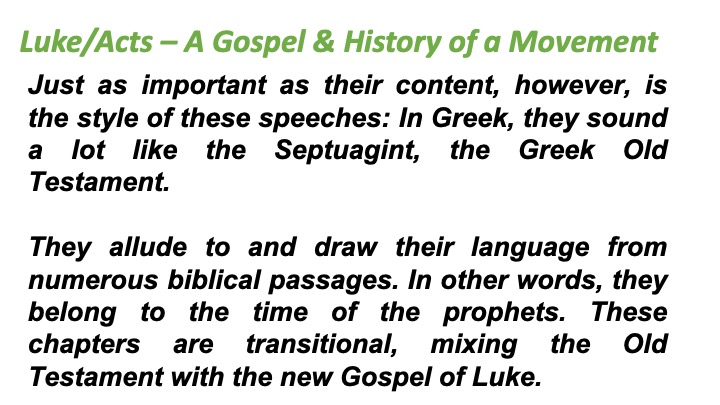
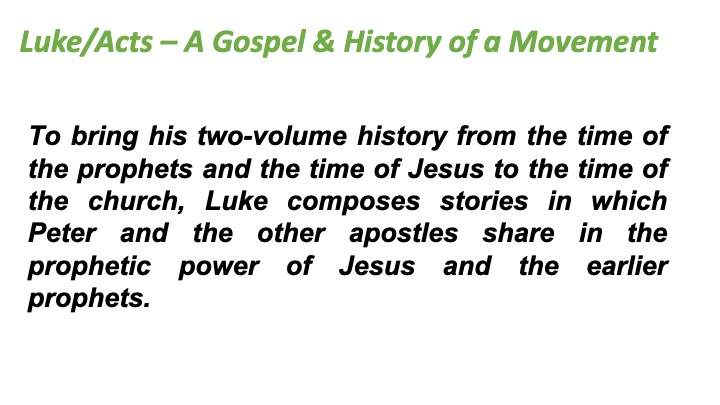
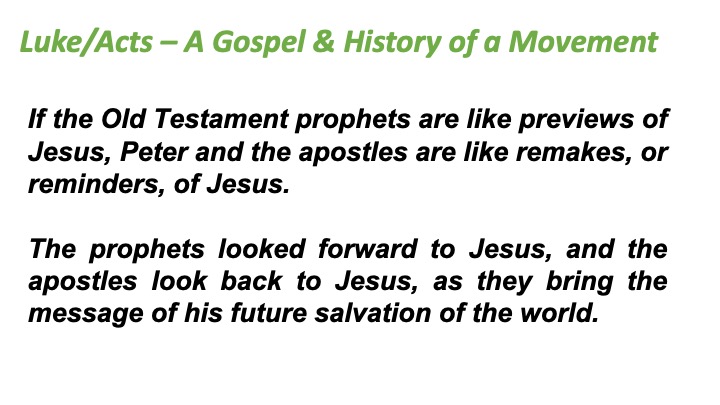
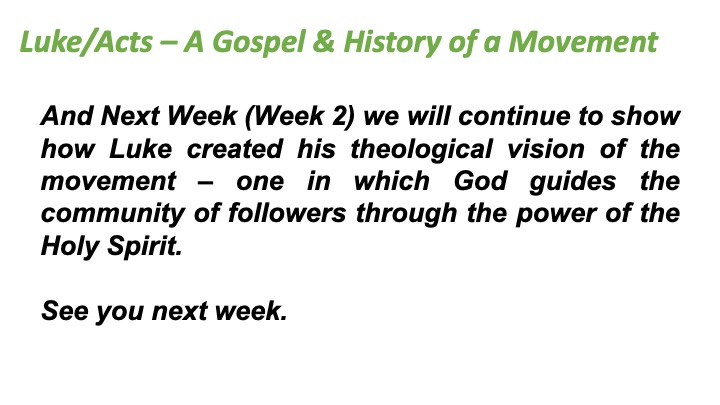
Luke/Acts – A Gospel & History of a Movement - The Text
Luke-Acts – A Gospel & History of a Movement
Introduction
As I mentioned earlier this year when I taught on 1st Thessalonians and Paul, I will be teaching several New Testament classes and reviewing modern scholarship – particularly reading them thru the eyes of literature.
1st Thessalonians was not that much of a challenge (3 pages long).
The Gospel of Luke is the first book of a two-volume work that scholars call Luke-Acts. By far the longest single piece of literature in the New Testament, Luke-Acts tells a grand story, from the births of Jesus and John the Baptist to the arrival and ministry in Rome of the Apostle Paul - a history of events that spanned about six decades.
Luke-Acts presents not merely a gospel, an account of Jesus’s ministry and death, but also the first history of the Christian movement.
Matthew and Mark do not use the term “Christians” to
refer to themselves or the movement of Jesus followers. But Luke does use that
term, which first shows up in Acts, chapter 11.
But Luke’s preferred term for what we call Christianity is actually “the Way,” and he suggests that “Christians” was a term first used by outsiders to label Jesus followers.
Still, the appearance of the name shows that Luke
thinks of the Jesus movement as a distinct group, separate from Judaism. It’s a
movement that now deserves its own history.
Most scholars date Luke-Acts somewhere between the years 90 and 120. By this time, the author - whose name is not known, but whom we will refer to as Luke for convenience—could look back at how much had happened since Jesus was born.
Luke-Acts
In the opening sentence of his gospel, Luke acknowledges that he is not the first person to write about these things.
“Many,” Luke says, “have undertaken to set down an orderly account of the events that have been fulfilled among us.”
Luke has used these previous writings and thoroughly investigated everything for himself to create his own orderly account.
Luke presents himself as a historian, someone who has sources and critically analyzes them to present his own narrative.
His reference to “many” such writers might be an exaggeration, but most likely there were more than we know about.
Was it really created by one writer?
There is seldom uniform consensus among modern scholars, but almost all of them view “Luke” as the writer of both.
Two reasons for this – the sophisticated writing style – and the introduction to Luke and The Acts of the Apostles.
Luke 1
1 Many people have already applied themselves to the task of compiling an account of the events that have been fulfilled among us. 2 They used what the original eyewitnesses and servants of the word handed down to us. 3 Now, after having investigated everything carefully from the beginning, I have also decided to write a carefully ordered account for you, most honorable Theophilus. 4 I want you to have confidence in the soundness of the instruction you have received.
Acts 1 1 Theophilus, the first scroll I wrote concerned everything Jesus did and taught from the beginning, 2 right up to the day when he was taken up into heaven. Before he was taken up, working in the power of the Holy Spirit, Jesus instructed the apostles he had chosen. 3 After his suffering, he showed them that he was alive with many convincing proofs. He appeared to them over a period of forty days, speaking to them about God's kingdom. 4 While they were eating together, he ordered them not to leave Jerusalem but to wait for what the Father had promised. He said, "This is what you heard from me: 5 John baptized with water, but in only a few days you will be baptized with the Holy Spirit."
Luke-Acts
Acts 1
4 While they were eating together, he ordered them not to leave Jerusalem but to wait for what the Father had promised. He said, "This is what you heard from me:
5 John baptized with water, but in only a few days you will be baptized with the Holy Spirit."
Luke-Acts
We can identify two of Luke’s sources - the Gospel of Mark and the hypothetical lost document Q.
Mark provided Luke with the basic plot of his first volume, from Jesus’s baptism to his resurrection, and Q contained teachings of Jesus that Mark did not have, like for example the Lord’s Prayer.
Because we have one of Luke’s sources, the Gospel of Mark, we can see how Luke uses it.
For the most part, Luke follows Mark closely and doesn’t make many changes.
He does omit a large section, from Mark 6:45 through Mark 8:27, perhaps thinking that it did not contribute to the narrative he wanted to tell.
Luke-Acts
Luke’s writing resembles that of Mark and Matthew in the sections where they overlap, but where Luke does his own writing, he’s more sophisticated.
He intertwines stories, such as the births of Jesus and John the Baptist in the opening chapters of Luke.
In Acts, we find extended scenes with real drama, such as Paul’s shipwreck in chapter 28.
One way Luke unifies his work is by creating a geographical movement to and from Jerusalem. In Luke, Jesus starts his ministry in Galilee, well to the north of Jerusalem.
He then travels through Samaria, toward Jerusalem. The last seven chapters of Luke are set in Jerusalem.
Acts then opens with the disciples still in Jerusalem. Then the apostles are shown moving from Jerusalem into Samaria, making Jesus’s journey in reverse.
In the remainder of Acts, the gospel spreads further, until Paul reaches Rome.
Luke-Acts
Acts then opens with the disciples still in Jerusalem. Then the apostles are shown moving from Jerusalem into Samaria, making Jesus’s journey in reverse.
In the remainder of Acts, the gospel spreads further, until Paul reaches Rome.
Likewise, both Luke and Acts include major trial scenes.
Toward the end of Luke, Jesus appears before a Jewish council and then before the Roman governor Pilate.
Toward the end of Acts, Paul appears before a Jewish council and then before the Roman governor Festus.
Several important themes of Luke-Acts appear in a sermon by Jesus in chapter 4 of Luke:
Jesus presents himself as a prophet, a successor to Isaiah.
He’s a faithful Jew who attends the synagogue and preaches there. The Holy Spirit is upon him.
He has a special mission to the poor and oppressed. And all this fulfills Scripture.
Luke Chapter 4
16 Jesus went to Nazareth, where he had been raised. On the Sabbath he went to the synagogue as he normally did and stood up to read. 17 The synagogue assistant gave him the scroll from the prophet Isaiah.
Note that Luke is careful to present Jesus as a faithful Jew who regularly attends the synagogue and preaches there.
He unrolled the scroll and found the place where it was written:
18 The Spirit of the Lord is upon me,
because the Lord has anointed me.
He has sent me to preach good news to the poor,
to proclaim release to the prisoners
and recovery of sight to the blind,
to liberate the oppressed,
and to proclaim the year of the
Lord’s favor.
So, in Luke, Jesus talks about himself fulfilling Scripture, specifically a prophecy from Isaiah.
And in another parallel in Acts, Peter talks about Jesus fulfilling Scripture - in this case, prophecies from David in the Psalms.
Luke-Acts
When Luke was writing in the late 1st or early 2nd century, nearly all Christians were Gentiles, even though Jesus was a Jewish prophet and he and his followers were faithful Jews.
As Luke presents it, Jews rejected Jesus’s message, so Jesus and his apostles turned to Gentiles instead.
In Luke, Jesus talks about himself fulfilling Scripture, specifically a prophecy from Isaiah. In Acts, Peter talks about Jesus fulfilling Scripture - in this case, prophecies from David in the Psalms. Using parallel scenes like these, Luke not only crafts his two volumes into one book; he also reiterates his primary theological ideas and shows how God’s history of salvation continues from the ministry of Jesus to the ministry of the apostles.
Luke-Acts
In Luke’s view, events don’t simply happen; they are directed by God through his Holy Spirit.
Throughout history, God leads people to salvation through men called prophets, including John the Baptist, transitioning to the chief prophet (Jesus), who then, with the Holy Spirit, prepares the movement to continue.
That history can be divided into three general time periods:
The time of the Hebrew prophets, from the beginning of Israel through John the Baptist; the time of Jesus; and the time of the church, when the apostles live out the message of Jesus and look forward to Jesus’s return to establish his kingdom.
With this scheme in mind, it’s no surprise that Luke gives special consideration to the transition from one period to the other. For example, he devotes a lot of attention to John the Baptist in order to make clear the transition from the time of the prophets to the time of Jesus.
Luke-Acts
Clues in Luke identify John as a prophet in the tradition of the prophets of Israel, the last in a long line that goes back at least to Samuel.
In the first two chapters of Luke, three characters deliver prophetic hymns or poems. These reflect some of Luke’s central themes: God’s interest in the hungry, the poor, and the oppressed; the fulfillment of prophecy; and the salvation of Gentiles.
Just as important as their content, however, is the style of these speeches: In Greek, they sound a lot like the Septuagint, the Greek Old Testament.
They allude to and draw their language from numerous biblical passages. In other words, they belong to the time of the prophets. These chapters are transitional, mixing the Old Testament with the new Gospel of Luke.
To bring his two-volume history from the time of the prophets and the time of Jesus to the time of the church, Luke composes stories in which Peter and the other apostles share in the prophetic power of Jesus and the earlier prophets.
If the Old Testament prophets are like previews of Jesus, Peter and the apostles are like remakes, or reminders, of Jesus.
The prophets looked forward to Jesus, and the apostles look back to Jesus, as they bring the message of his future salvation of the world.
Luke-Acts
And Next Week (Week 2) we will continue to show how Luke created his theological vision of the movement – one in which God guides the community of followers through the power of the Holy Spirit.
See you next week.
Luke-Acts 1
Links
< Home Page > < Luke-Acts Menu > < Top of Page >
Your first block of text...